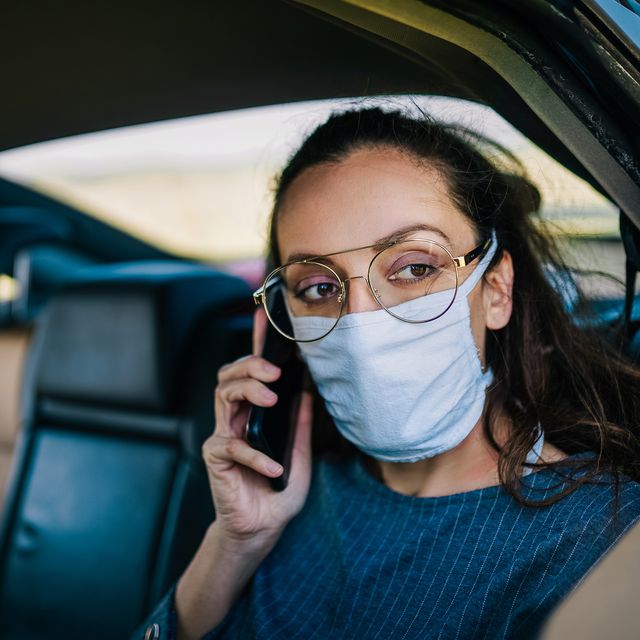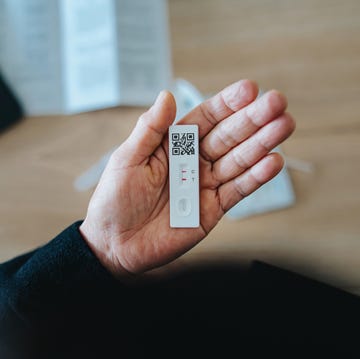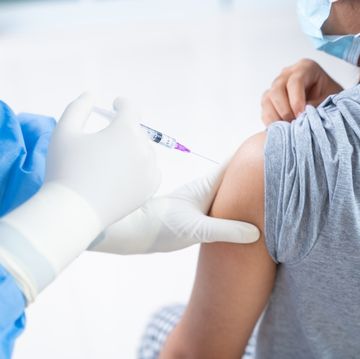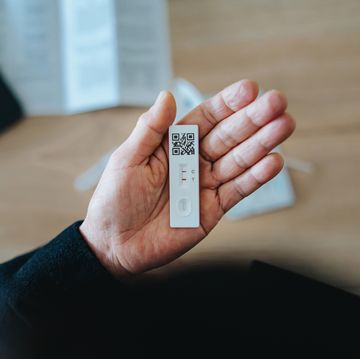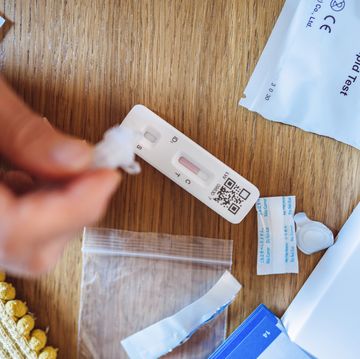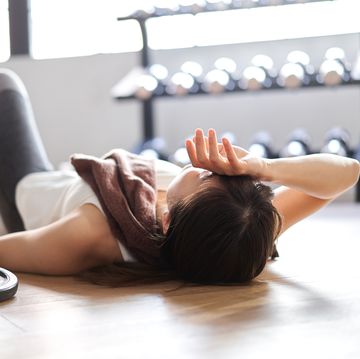To reduce the spread of COVID-19, you know you should be wearing a face mask in public and keeping a six-foot distance from people who don’t live in your home—but that’s pretty difficult to do when you have to get into a car, especially if you live in a city where rideshare services, like Uber or Lyft, are heavily relied on.
Now, new research has delved into how coronavirus-laden particles may behave inside a moving vehicle, and what you can do to better ventilate the small space during your ride.
The study, which was published in the journal Science Advances this month, analyzed airflow inside a Toyota Prius using computer simulations, which modeled how airborne particles can travel inside of an air-conditioned car moving at 50 miles per hour. The simulation had a driver in the usual spot and a passenger in the back right seat—the greatest distance two people can have in a car.
The researchers found that the way air normally flows around the outside of a car when it’s moving creates a pressure inside of the car. As a result, the air pressure in the front is a little lower than the air pressure in the back. Because of this, air that’s flowing around the inside of the car usually flows from the back to the front.
The researchers also simulated the airflow inside of the car, along with the movement of aerosols, when different windows were open and closed. The result? When all of the windows were closed (the riskiest option), up to 10% of aerosols exhaled by one person in the car could reach the other person, which could then theoretically be breathed in and cause illness. When all of the windows were completely open (the safest option), anywhere between 0.2 to 2% of the aerosols could reach the other person, as opening each window creates “two distinct airflow paths,” the researchers note.
This led to an interesting discovery: When it’s not possible to have all of the windows down (say, because it’s super cold out), having each passenger open the window opposite of their seat—so, the back left window and the front right window, in this example—created a protective air current between the driver and the passenger. “An airflow pattern that travels across the cabin, farthest from the occupants, can potentially reduce the transmission risk,” the researchers wrote in the study.
As for partially open windows? That needs more research, the study authors concluded.
So, what is the safest way to ride in a car with others during the COVID-19 pandemic?
The CDC has some recommendations on what to do when you’re traveling in a personal vehicle, but it’s not nearly as in-depth as the study’s findings. The agency currently recommends doing the following when traveling by car with people from outside your household:
- Clean and disinfect frequently touched surfaces.
- Consider limiting the number of people in the car to only those who are necessary.
- Open the car windows.
- Set the air ventilation on non-recirculation mode.
You should also wear a face mask, carry hand sanitizer, and stay six feet apart from others while waiting to get into the car.
All that said, if you can help it, it’s probably best to completely avoid getting in a car with people outside your household. “Frankly, it’s not a good idea to be riding around with other people,” says Richard Watkins, M.D., an infectious disease physician and a professor of internal medicine at the Northeast Ohio Medical University.
But there are always exceptions for certain scenarios, says infectious disease expert Amesh A. Adalja, M.D., senior scholar at the Johns Hopkins Center for Health Security. “There’s not a one-size fits all answer,” he says. “It depends on where you’re going, why you’re going, and what other ways you have of getting there.” In an emergency situation—say, getting another person to the ER—the benefits certainly outweigh the risks.
Bottom line: If getting into a car with others is necessary, open as many windows as you can to boost airflow, wear a face mask, and use hand sanitizer before you get into the car and after you’re done with the drive.
Go here to join Prevention Premium (our best value, all-access plan), subscribe to the magazine, or get digital-only access.
FOLLOW PREVENTION ON INSTAGRAM
